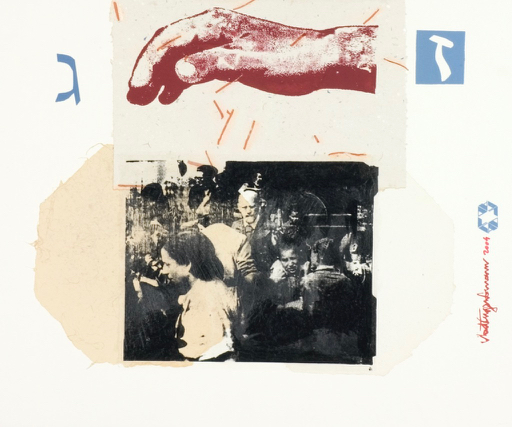The spoon
the object and dehumanization in Primo Levi
DOI:
https://doi.org/10.35699/1982-3053.2023.45638Keywords:
Primo Levi, Shoah, Food, Concentration campsAbstract
The spoon is one of the most common everyday objects. They can be made of the most varied materials such as wood, steel, iron, and other nobler metals, even bones, paper, plastic. Primo Levi in Is This a Man? states that one of his initial concerns at Auschwitz was how he would eat the soup given out in the morning, as he did not have a spoon. This everyday object becomes, in that space of confinement and death, a valuable bargaining chip in the busy trafficking network that took place in the concentration camps. Its use, in addition to the essential consumption of daily soup, was a factor of civility and, ultimately, of humanity. The objective of this article is to present the spoon as an object of special desire and need in Primo Levi's text. The various scenes in which this object plays the main role will be under analysis, given the precarious conditions of both the food and the prisoners themselves: thefts by the other inmates, confiscations by the authorities, smuggling inside and outside the camps. It is intended, therefore, to demonstrate how the spoon is valued in the concentration camps, because despite the difficulties in obtaining them, its use constitutes a small reunion with lost dignity and civility and an attempt to return to the stolen human condition. by the Nazis.
Downloads
References
DICIONÁRIO Caldas Aulete online. Disponível em: https://aulete.com.br/. Acesso em: 30 jul. 2021.
DIZIONARIO Italiano. Disponível em: https://www.dizionario-italiano.it/. Acesso em: 29 jul. 2021.
GRANDE Dicionário Houaiss. Disponível em: https://houaiss.uol.com.br. Acesso em: 30 jul. 2021.
KNIVES, forks, and spoons. Aramco World, New York, v. 11, n. 3, p. 16-19, March 1960.
LANDSBERG, Alison. America, the Holocaust, and the Mass Culture of Memory: Toward a Radical Politics of Empathy. New German Critique, Memories of Germany, n. 71, p. 63-86, Spring-Summer, 1997.
LENGYEL, Olga. Os fornos de Hitler. Tradução de Celina Portocarrero e Thereza Christina Motta. São Paulo: Planeta do Brasil, 2018. p. 143.
LEVI, Primo. A trégua. Tradução de Marco Lucchesi. São Paulo: Companhia das Letras, 2010.
LEVI, Primo. É isto um homem? Tradução de Luigi del Re. Rio de Janeiro: Rocco, 1988.
LEVI, Primo. Opere. Organização de Marco Belpoliti. Torino: Einaudi, 1997.
LEVI, Primo. Os afogados e os sobreviventes: os delitos, os castigos, as penas, as impunidades. Tradução de Luiz Sérgio Henriques. São Paulo: Paz e Terra, 2004.
MINESTRA; zuppa. In: Dizionario Italiano. Disponível em: https://www.dizionario-italiano.it/. Acesso em: 29 jul. 2021.
MIODOWNIK, Mark. The Taste of a Spoon. Materials Today, v. 11, n. 6, p. 6, jun. 2008.
OBJETOS escondidos por prisioneiros são descobertos em Auschwitz. Deutsche Welle, Berlim, 20 maio 2020. Disponível em: https://p.dw.com/p/3cXnB. Acesso em: 21 mar. 2021.
SNODGRASS, Mary Ellen. Encyclopedia of Kitchen History. New York: Fitzroy Dearborn, 2004.
SPIEGELMAN, Art. Maus: a história de um sobrevivente. Tradução de Antonio de Macedo Soares. São Paulo: Companhia das Letras, 2005.
STRZELECKI, Andrzej. The Plunder of Victims and Their Corpses. In: GUTMAN, Yisrael; BERENBAUM, Michael. (org.). Anatomy of the Auschwitz Death Camp. Bloomington: Indiana University Press, 1994.
VENEZIA, Shlomo. Sonderkommando, no inferno das câmaras de gás. Tradução de Jorge Bastos. Rio de Janeiro: Objetiva, 2010.
Lista de figuras
Fig. 1 – JACOB CHAIM’S SPOON, Made in Dora-Mittelbau Forced Labour Camp. Montreal HolocaustMuseum. Disponível em: https://museeholocauste.ca/en/objects/jacob-chaims-spoon-camp-dora-mittelbau/. Acesso em: 3 ago. 2021.
Fig. 2 – Maus, de Art Spiegelman, p. 194.
Fig. 3 – Spoons. Fotografia de pilha de facas, garfos e colheres em Auschwitz-Birkenau. Alan Jacobs, 1980. Disponível em: https://remember.org/jacobs/index. Acesso em: 4 ago. 2021.
Downloads
Published
How to Cite
Issue
Section
License
Copyright (c) 2023 Arquivo Maaravi: Revista Digital de Estudos Judaicos da UFMG

This work is licensed under a Creative Commons Attribution 4.0 International License.
Os direitos autorais pertencem exclusivamente aos autores. Os direitos de licenciamento utilizados pelo periódico é a licença Creative Commons Attribution 4.0 (CC BY 4.0): são permitidos o compartilhamento (cópia e distribuição do material em qualquer meio ou formato) e adaptação (remix, transformação e criação de material a partir do conteúdo assim licenciado para quaisquer fins, inclusive comerciais.






